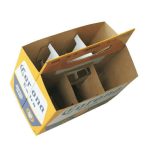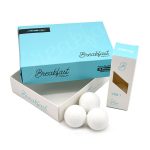
In the competitive world of home appliances, the first physical interaction a customer has with your product isn’t the sleek stainless steel finish or the intuitive digital interface—it’s the packaging box. Often overlooked as merely a protective shell, modern home appliance packaging has evolved into a sophisticated marketing tool, engineering marvel, and sustainability statement all rolled into one corrugated masterpiece. The unboxing experience begins the brand narrative, setting expectations before the appliance ever sees a kitchen counter or laundry room.
Walk through any appliance aisle and you’ll witness a silent battle fought not with features, but with cardboard and ink. The psychology behind effective packaging is profound—clean, premium designs suggest quality and reliability, while cluttered, flimsy boxes unconsciously signal inferiority. Color schemes matter immensely; crisp whites and metallic accents convey modernity, while earthy tones might emphasize eco-friendliness. Every element from handle cutouts to typography contributes to building consumer confidence during that critical moment when purchase consideration turns into ownership pride.
Engineering plays an equally crucial role behind the scenes. Today’s appliance packaging undergoes rigorous testing that would put many products to shame. Vibration simulations replicate cross-country truck journeys, compression tests ensure stacking stability in warehouses, and climate chambers assess material performance under extreme humidity. The innovative use of molded pulp cushions, corrugated partitions, and air cushioning systems has dramatically reduced shipping damages while minimizing material usage. These aren’t just boxes—they’re precisely calibrated protective systems engineered to deliver your refrigerator’s doors perfectly aligned and your oven’s glass intact.
Sustainability has transformed from buzzword to business imperative in packaging design. Leading manufacturers have embraced recyclable materials, eliminated plastic foam in favor of paper-based alternatives, and optimized box dimensions to reduce shipping volume. Some have introduced innovative ‘plant-a-tree’ programs where codes on boxes enable consumers to contribute to reforestation. The circular economy model is gaining traction, with companies designing packaging that can be easily disassembled for recycling or even repurposed as storage solutions, extending the packaging’s lifecycle beyond the initial unboxing.
The digital-physical bridge represents packaging’s newest frontier. QR codes seamlessly connect the physical box to digital content—video tutorials, registration portals, or augmented reality experiences that show how the appliance would look in your space. Smart packaging with NFC chips can trigger personalized setup instructions when tapped with a smartphone, transforming the potentially daunting installation process into an guided experience. This connectivity turns the static box into an interactive platform that continues adding value long after purchase.
Looking forward, home appliance packaging is poised for even more revolutionary changes. Biodegradable materials derived from mushroom roots and seaweed are entering commercial use, while embedded sensors that monitor handling conditions throughout shipping are becoming more affordable. The industry is moving toward standardized packaging sizes to optimize logistics, and some visionaries imagine a future where appliances arrive in reusable containers that are collected for the next delivery. As smart homes become mainstream, packaging might even incorporate temporary power sources allowing customers to test basic functions before fully installing their new appliances.
The humble home appliance box has graduated from simple container to brand ambassador, engineering achievement, and environmental champion. It protects your investment, tells your brand’s story, and increasingly reflects your values. The next time you’re about to recycle that refrigerator or washing machine box, take a moment to appreciate the sophisticated design thinking that went into creating it—because in today’s market, great products deserve equally great packaging.




Leave a Message